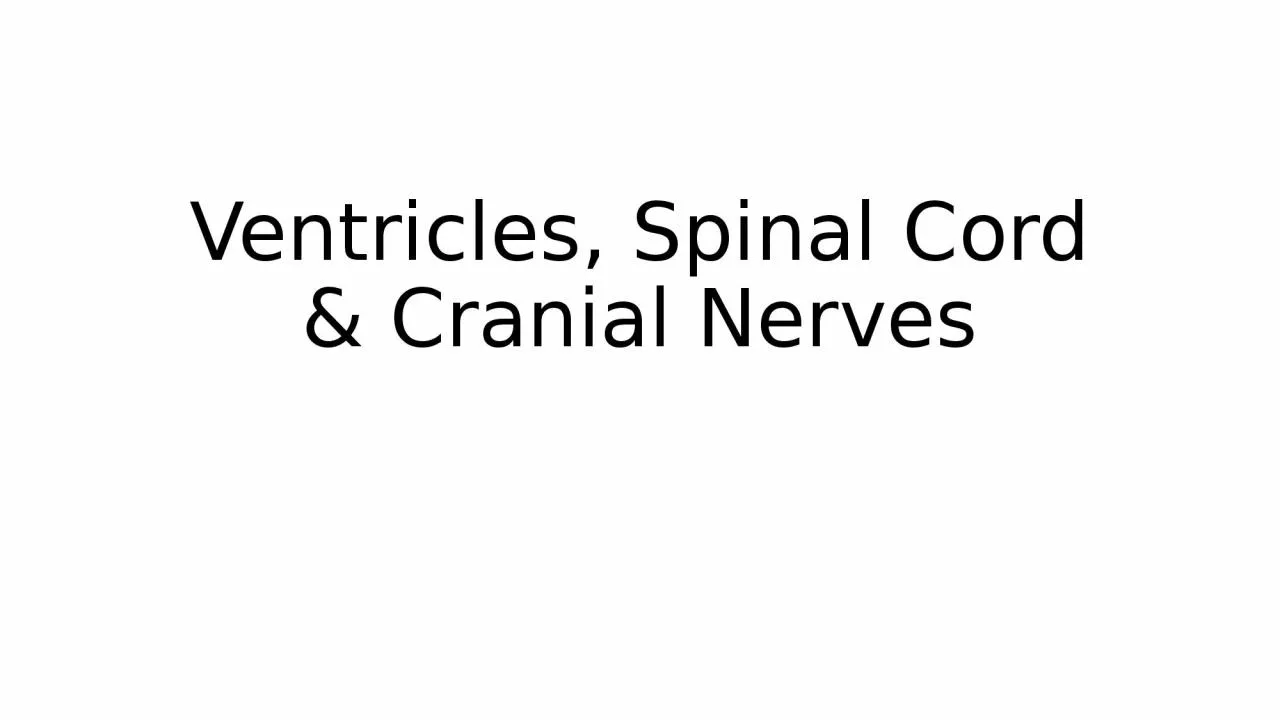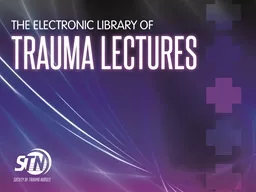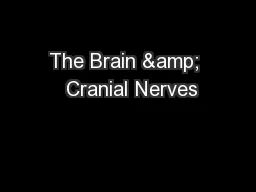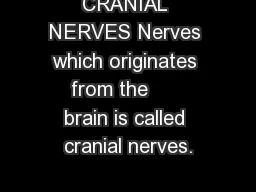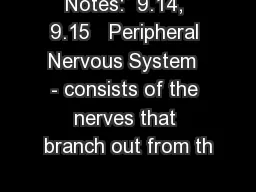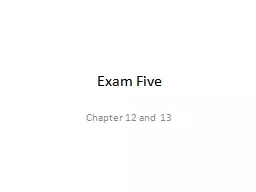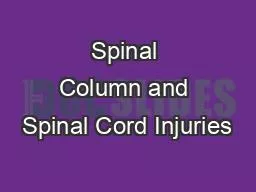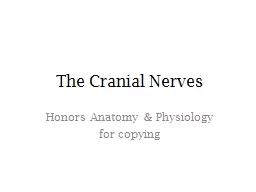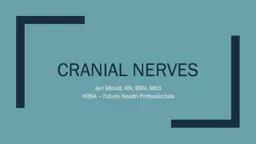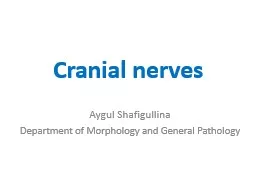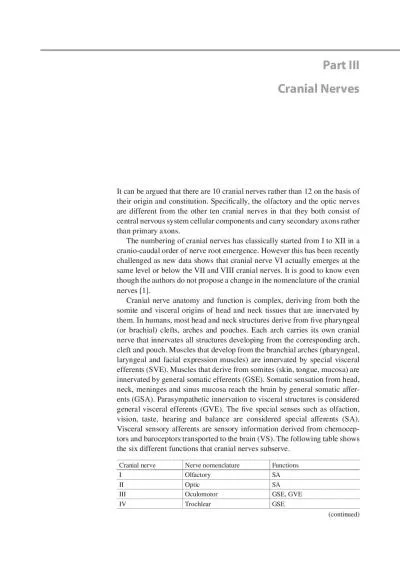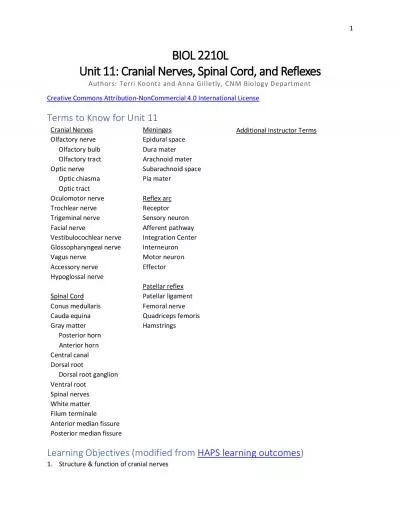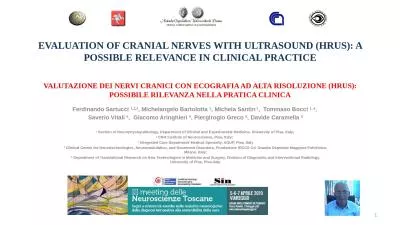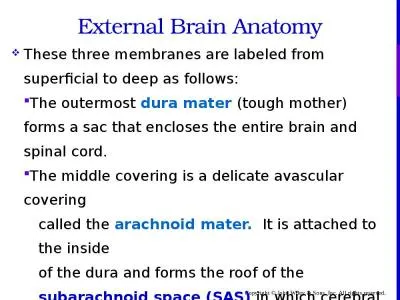PPT-Ventricles, Spinal Cord & Cranial Nerves
Author : blanko | Published Date : 2022-06-14
Objectives Identify cranial nerves and describe the function of each Understand the signs and tests for CN dysfunction Make an accurate model of the ventricle system
Presentation Embed Code
Download Presentation
Download Presentation The PPT/PDF document "Ventricles, Spinal Cord & Cranial Ne..." is the property of its rightful owner. Permission is granted to download and print the materials on this website for personal, non-commercial use only, and to display it on your personal computer provided you do not modify the materials and that you retain all copyright notices contained in the materials. By downloading content from our website, you accept the terms of this agreement.
Ventricles, Spinal Cord & Cranial Nerves: Transcript
Objectives Identify cranial nerves and describe the function of each Understand the signs and tests for CN dysfunction Make an accurate model of the ventricle system of the brain Discuss the clinical implications of dysfunction in the ventricular system. Scalp and skin. Protection of the Central Nervous System. Figure 7.17a. Meninges. Dura mater. Double-layered external covering. Periosteum. —. Meningeal. . Layer-. Folds inward in several areas. Meninges. Objectives. At the conclusion of this presentation the participant will be able . to:. Identify the components of the spine. Assess for spine and spinal cord injury. Discuss the initial management of the spinal cord injured patient. Sarah Cronin. Matt . hawkins. Tyler . plas. Marissa . kramer. . The adult human brain contains about . 98%. of the body’s neural tissue. . A typical brain weighs about . 1.4kg. The brain of a male is usually about 10% . There are 12 pairs of cranial nerves.. Name of the Cranial Nerves. I. Olfactory n.. II. Optic n.. III. Occulomotor n.. IV. . Trochlear. n.. V. Trigeminal n.. VI. . Abducent. n.. VII. Facial n.. VIII. . Somatic Nervous System . (conscious activities) . Skin, skeletal system . . Autonomic Nervous System . (unconscious activities); heart, viscera, glands . Spinal Cord. CNS tissue is . _____________________________________ . from the foramen magnum to L. 1. Provides . _______________________________________ to . and from the brain. Protected by bone, . meninges. ReferencesAdvanced Trauma Life Support for Doctors ATLS Student Course Manual 8thed 2008 Chicago IL American College of Surgeons Ahn H Singh J Nathens A MacDonald RD Travers A Tallon J Fehlings MG and for copying. CRANIAL NERVES. 12-pair. named “cranial” because each passes thru a foramina of the cranium. part of PNS. each with roman numeral (order from anterior . posterior in which nerves arise from base of brain) & a name that indicates nerve distribution. HOSA – Future Health Professionals. On Fin . Old And. Olympus German. Towering Viewed. Top Some. A Hops. 12 pairs. I Olfactory VII Facial. II Optic VIII Acoustic. III Oculomotor IX Glossopharyngeal. Department of Morphology and General Pathology. Organization of the nervous system. . 1. . Central. . Nervous. . System. (. CNS. ) . a. Brain. b. Spinal cord. 2. . Peripheral Nervous System. (. PNS. Cranial nerveNerve nomenclatureOlfactoryTrochlear 168 Cranial nerveNerve nomenclatureTrigeminalGSA (face, oral cavity, FacialGSA (skin, mucosa, external (facial muscles), SA (taste)VestibulocochlearVA 1 BIOL 2210L Unit 11 : Authors: Terri Koontz and Anna Gilletly, CNM Biology Department Creative Commons Attribution - NonCommercial 4.0 International License Terms to Know for Unit 1 1 Cranial Ner (HRUS. ): A POSSIBLE RELEVANCE IN CLINICAL . PRACTICE. VALUTAZIONE DEI NERVI CRANICI CON ECOGRAFIA AD ALTA RISOLUZIONE (HRUS): POSSIBILE RILEVANZA NELLA PRATICA CLINICA. Ferdinando Sartucci . 1,2,3. , . are labeled . from superficial to deep as follows: . The outermost . dura. mater . (tough mother) forms a sac that encloses the entire . brain and spinal cord. .. The middle . covering is . a delicate avascular covering .
Download Document
Here is the link to download the presentation.
"Ventricles, Spinal Cord & Cranial Nerves"The content belongs to its owner. You may download and print it for personal use, without modification, and keep all copyright notices. By downloading, you agree to these terms.
Related Documents

